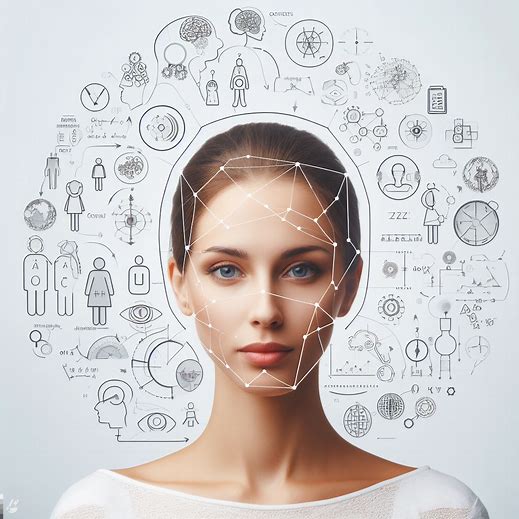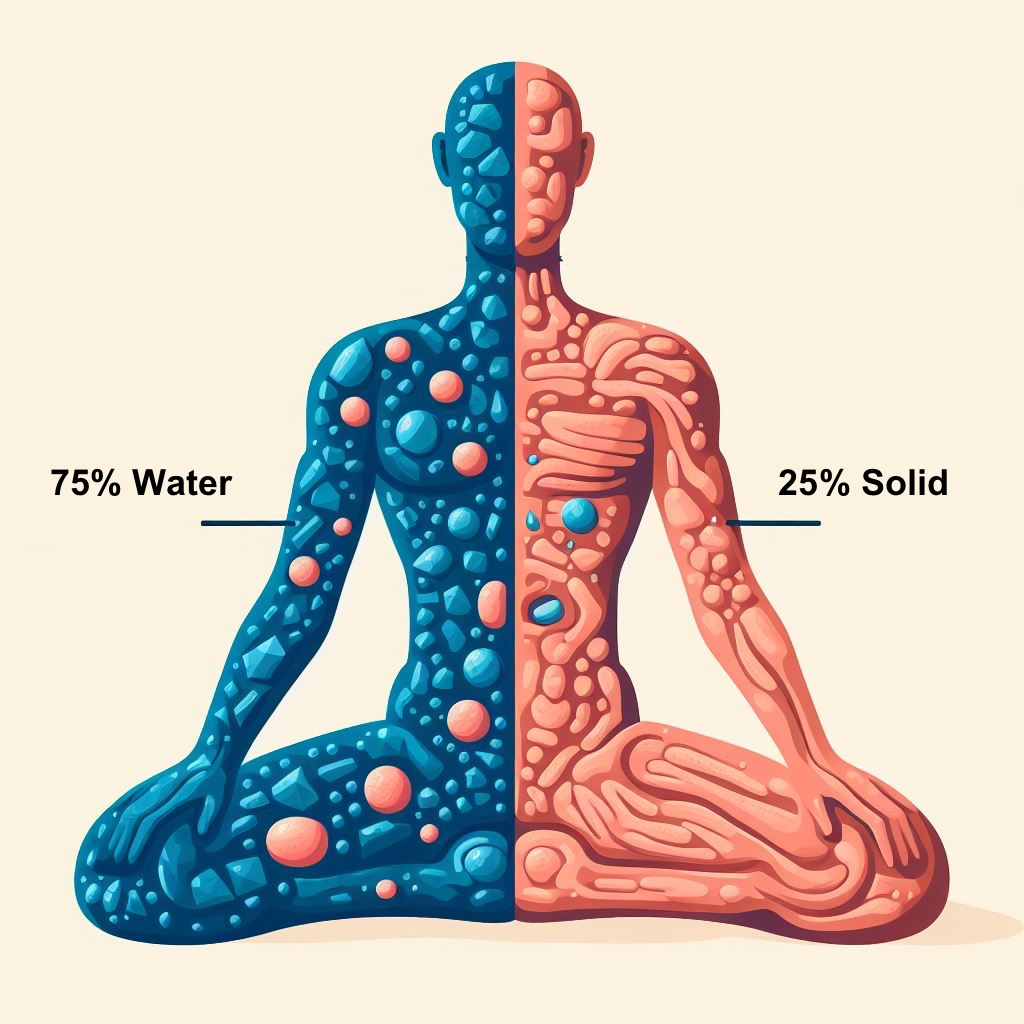Deconstructing The Self

What is the "self" exactly
What is the "self" exactly? If you were to ask someone what they love most, it would undoubtedly be the "self." If you were to ask what someone likes the most, it would be the happiness of "self." If you were to ask what someone dislikes the most, it would be the suffering of "self." If you were to ask what someone longs for the most, it would be for the "self" to be forever happy, free from suffering.
It can be said that all of a person's thoughts and actions throughout life are an effort to create happiness for the "self" and avoid suffering. Happiness and suffering can be categorized into two types: those related to the body and those related to the mind. Therefore, this "self" is divided into two parts by people: the body and the mind.
People might regard the body as the "self" and the mind as "mine," or vice versa, or consider the body and mind together as the "self," or believe there is another "self" inside or outside the body and mind, with the body and mind being "mine." So, what is the "self" exactly?
The "self" as perceived by people must meet at least four characteristics:
-
It must possess autonomy, the ability to act according to one's own will, express free will, make independent decisions, and initiate processes independently.
-
It must be constant, the same from birth to death, from one place to another. People don't consider themselves as different individuals in childhood, youth, or old age, and they don't think they are one person here and another person somewhere else.
-
It must be unique and indivisible. People don't consider multiple individuals simultaneously as themselves.
-
It must be a living being with thoughts, feelings, and awareness.
Since the views regarding the "self" revolve around the body and mind, let's analyze both the body and mind to see what the "self" truly is.

The body is composed of two types of substances: 25% solid matter and 75% water. Solid matter consists of proteins, lipids, carbohydrates, minerals, etc., forming hair, nails, teeth, skin, muscles, organs, and more. Liquid matter is water, present in bodily fluids like blood, tears, saliva, urine, sweat, and externally in rivers, lakes, clouds, rain, plant juices, etc. Both internal and external matter are fundamentally the same; they differ in form and configuration, continuously changing based on conditions.
People rely on external food to transform solid matter from food into solid matter in their bodies and replenish the body's water with water from food. After metabolism, some solid matter and water are excreted, including gases and water vapor from respiration. If one stops eating, the body doesn't grow, and vitality quickly diminishes. Thus, these substances change with conditions, have no autonomy, no constancy, and no uniqueness, so they are not the "self."
If there is no matter, there is void. The body's inner void includes spaces like the nasal cavity, mouth, ear canal, esophagus, the intestines, and gaps between organs. External voids include the sky, caves, rooms, hollow trees, empty containers, and spaces between objects. All voids are essentially empty and identical, and they often interconnect; when they are filled with matter, the void ceases to exist. They exist conditionally, lack autonomy, and have no constancy, so they are not the "self."
The body generates heat through metabolism, maintaining a stable temperature that supports life and growth. External heat sources include sunlight, fire, geothermal energy, and air temperature. Internal and external heat are fundamentally the same, they interact, and the body disperses heat to the environment while absorbing heat from external sources. They exist conditionally, have no constancy, and lack autonomy, so they are not the "self."
The body can move, including bodily motion, speech, breathing, heartbeats, pulse, muscle stretching, eating, drinking, excreting, muscle contractions, etc. If all activities in the body stop, life ends. External movement refers to natural events like wind rustling leaves, trees shedding leaves, celestial rotations, typhoons, and earthquakes. Internal and external movements are fundamentally the same and are not autonomous; they are transient, lack constancy, have no substance, and do not possess a sense of "self," so they are not the "self."
Just like various materials like metals, plastics, gasoline, glass, rubber, etc., in space combine to form a car, these materials do not specifically belong to a particular car or represent the car itself. Similarly, the body is composed of solid matter and water in space, and these materials do not belong to a particular individual or represent the individual but rather combine in various forms to form the body's shape, and thus, the body can experience heat and movement. Without them, the body and its attributes don't exist.
If people carefully observe and consider the five physical phenomena within the body (solid matter, water, void, heat, and movement), they can realize that none of these attributes are the "self," nor do they belong to the "self." The body possesses five sensory systems: the visual system (eyes), auditory system (ears), olfactory system (nose), gustatory system (tongue), and tactile system (skin). These senses are interconnected with the central nervous system (the spinal cord and the brain). These sensory and mental systems are also formed by phenomena composed of matter, which lack autonomy, constancy, consciousness, and do not represent the "self."
When the senses interact with external objects, they produce sensations, and these sensations can lead to feelings, perceptions, and mental activities. Feelings are categorized into types of suffering, pleasure, or indifference. Perception is the overall understanding of sensory experiences based on past knowledge and experiences. All other mental phenomena fall under mental activities, including memory, thought, analysis, opinions, desires, decision-making, emotions, attention, etc. These four kinds of mental phenomena constitute what people call the "mind."
The mind is like natural light composed of various light waves. Without these light waves, there is no natural light. Similarly, the mind is composed of feelings, perceptions, knowledge, and mental activities. Without them, there is no mind. Besides sensations generated by the five senses, the mind can also create feelings based on memories of past feelings, perceptions, and mental activities, which we'll call mental sensations. People have six senses in total: sight, hearing, smell, taste, touch, and the mental sense. The six senses interact with six types of objects: light, sound, odor, flavor, touch, and thought, producing six types of sensations: visual, auditory, olfactory, gustatory, tactile, and mental sensations. These six senses and objects are like tuning to different radio channels; they are non-interfering. However, just as an external object and a sense need attention to generate sensations, they require the presence of mental activities. Without attention, the senses and objects do not produce mental phenomena. If attention is shifted from one object to another, the prior mental phenomenon disappears, replaced by the new object's corresponding mental phenomenon. Attention is essential for mental phenomena to arise. People only experience mental phenomena when they pay attention to an object; otherwise, they remain unnoticed.
The four mental phenomena of sensations, feelings, perceptions, and mental activities depend on attention. Attention creates and sustains mental phenomena, and when attention ceases, mental phenomena vanish. They lack autonomy, constancy, and cannot be possessed, making them not the "self." If people reach this understanding, they'll realize that thoughts about the existence or non-existence of the "self," what constitutes the "self" or what it is not, what they were in the past, what they are now, or what they will become, are all aspects of mental activities. Mental activities are conditioned, not autonomous, and not constant, leading to liberation when all activities cease.
The Strong Misconception of an Enduring Self
In a previous article, I described the Four Elements as solid, liquid, heat, and motion, and I presented the eyes, ears, nose, tongue, and body as five sensory organs. However, many friends who base their views on Buddhist scriptures do not agree with this. They believe that the Four Elements are earth, water, fire, and wind – four indivisible cosmic particles and the smallest units constituting all material things in the world.
From these Four Elements, the eyes, ears, nose, tongue, body, colors, sounds, fragrances, tastes, tactile sensations, and the primary elements of sustenance are generated. These Four Elements and the primary elements are all ultimate realities, subject to birth and cessation.
It is by observing these ultimate realities and their arising and ceasing that people develop wisdom. They perceive these as ultimate realities, and what I have described as conceptual realities cannot be equated with ultimate realities. When I first encountered Theravāda teachings, I also had an epiphany. I thought that the reason I struggled to comprehend profound Buddhist concepts like dependent origination, impermanence, no-self, reincarnation, and liberation was due to my lack of understanding of ultimate realities and conceptual realities.
However, I later discovered that what people call ultimate realities are actually the perception of a self, specifically, the notion of an enduring self. What they refer to as conceptual realities essentially correspond to the mental formation aggregate (the "sankhara" in Buddhism). Many traditions advocate avoiding conceptual realities during meditation, which essentially means avoiding the mental formation aggregate. This is because the failure to accurately recognize the mental formation aggregate and the failure to eliminate the perception of a self contribute to the belief that the Four Elements and sensory organs are ultimate physical phenomena.
This misunderstanding is akin to people's ignorance of their own existence as the Five Aggregates and mistakenly believing they have a soul, or their lack of knowledge about the structure of a camera, leading them to believe there is a truly existing camera, or their lack of understanding of a car's construction, making them think there is a truly existing car.
If people could grasp this concept, they would realize how concealed and challenging it is to eliminate the perception of a self. It can persist covertly for thousands of years and remain unnoticed in prominent texts. The harmful effects of this misconception are difficult to overstate, as even the faintest hint of it can cause countless individuals to struggle for a lifetime without realizing the truth.